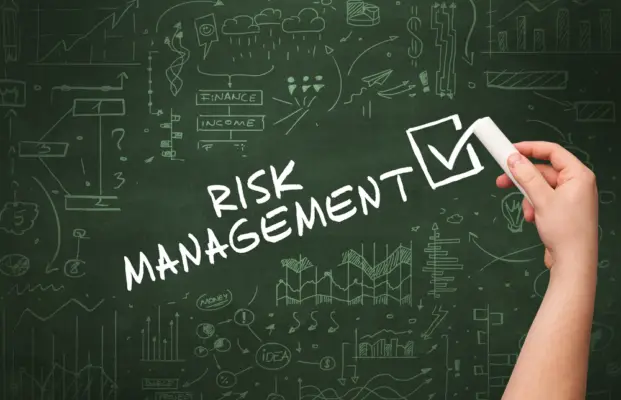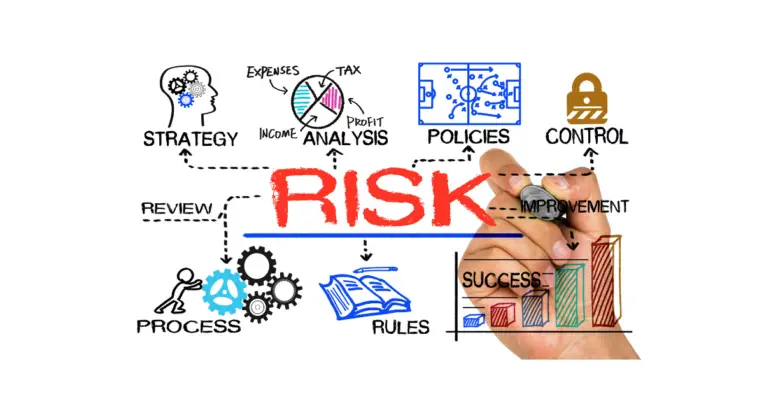One way for entrepreneurs to decrease risk is by diversifying their products or services. This means offering a variety of items or services to appeal to a wider range of customers. Businesses are less likely to be affected by changes in the market or economy because they are not relying on one particular business venture for all of their income.
Additionally, entrepreneurs can decrease risk by building strong relationships with suppliers and customers. These relationships provide stability and security, which can help weather any bump in the road.
Finally, maintaining a healthy cash flow is another way to reduce risk and create a great business strategy. This ensures that money is always available to meet expenses and keep the business running smoothly, even during tough times. This enables businesses to avoid reputation risk.
Is there any method to reduce risks in business ventures or invest in them? Becoming an effective entrepreneur is difficult because it requires constant effort and risk-taking. An entrepreneur is often described as an intelligent, driven, opportunistic individual who operates freely.
Because of their bravery, entrepreneurs will continue to beat all odds, regardless of their challenges. However, only one startup in 10 indeed succeeds, according to Forbes.
Of course, One way to help reduce failure risks is to have an excellent website built by an experienced developer. If you have a good product idea, you must test it to find the best product for that niche.
An entrepreneur is often portrayed as an intuitive, driven, opportunistic person. The courage shown to overcome adversity means it’ll never be impossible for a team to win.
These heroic entrepreneurial tales have led many people to believe they can succeed if they take the opportunity, not because they’ll have more knowledge about a given situation. Nonetheless, there’s no question about it; only an 8% success rate and many requests for financial assistance.
Becoming an entrepreneur can be one of the most exhilarating and terrifying choices a person can make. For many, the allure of being one’s own boss and taking control of their life is too great to resist, and the chances of business failure are higher.
However, the risk of starting a business is simply too high for most people. But what if there was a way for entrepreneurs to decrease that risk on their own business? Turns out there is. Check out this post to learn more about how lowering your overhead costs through diversification can help you minimize your risks as an entrepreneur.
Entrepreneurs face numerous challenges when starting and running a business, and one of the most significant is managing and minimizing risk. Risk reduction is a crucial aspect of entrepreneurship, as it can enhance the chances of success and sustainability.
This article explores one specific method entrepreneurs can employ to decrease risk in their ventures. By understanding the concept of risk, identifying its factors, and implementing effective strategies, entrepreneurs can navigate the uncertain business landscape with greater confidence and resilience.

What is an Entrepreneur?
Risk refers to the potential for loss or harm an individual or organization may face when undertaking a particular course of action.
In business entrepreneurs, reducing risk becomes crucial as it directly impacts the success and sustainability of a business venture.
Implementing market research, diversification, or forming strategic partnerships, entrepreneurs can effectively decrease risk and increase the likelihood of achieving their business objectives.
Definition of Risk
One approach to reducing risk for an entrepreneur involves implementing comprehensive risk management strategies. Risk is an inherent part of entrepreneurship, and understanding its definition is crucial for entrepreneurs to navigate the complex business landscape.
Risk can be defined as experiencing adverse outcomes or losses due to various factors, such as market volatility, competition, or unforeseen events. To decrease risk, entrepreneurs must develop a robust business plan outlining their business goals, growth opportunities, and potential challenges.
Additionally, they should clearly understand their financial plans and identify potential sources of capital to ensure sufficient funding for their ventures.
Implementing effective risk management strategies can help entrepreneurs identify and mitigate potential risks, safeguarding their businesses and increasing their attractiveness to potential buyers or sources of capital.
Why Reduce Risk?
Reducing risk is essential for entrepreneurs as it can enhance the stability and profitability of their ventures, making them more attractive to potential investors or buyers. By minimizing risk, entrepreneurs increase their chances of achieving success and sustainability in their business endeavors.
One way to decrease risk is by carefully analyzing the company’s resources and ensuring they are efficiently allocated. This involves assessing the available capital, human resources, and technological capabilities to optimize their utilization for maximum growth.
Additionally, understanding the target market and identifying business opportunities can help entrepreneurs develop a unique business model that caters to the needs and demands of their customers. This targeted approach gives entrepreneurs a competitive edge and reduces the risk of failure.
Adopting a proactive mindset toward risk management is crucial for entrepreneurial success.
Understanding Risk Factors
This paragraph introduces a discussion on the subtopic of understanding risk factors.
It highlights five key points:
- Financial risks.
- Market risks.
- Operational and management risks.
- Human resources risks.
- Technology risks.
These risk factors are important for entrepreneurs to consider as they can significantly impact the success of their ventures.
By understanding and managing these risks, entrepreneurs can make informed decisions and mitigate potential challenges that may arise in their businesses.
Financial Risks
Entrepreneurs can diversify their investment portfolio across different asset classes to mitigate financial risks. This strategy involves spreading investments across various types of assets, such as stocks, bonds, real estate, and commodities. By diversifying, the entrepreneur reduces the impact of any single investment on their overall portfolio.
This approach is particularly important for businesses as it minimizes the risk of losing all capital in one business venture. Furthermore, successful entrepreneurs understand the importance of managing their personal finances separate from their business finances. This separation allows them to protect their personal assets from any potential business losses.
Additionally, entrepreneurs should explore different funding options, such as personal or business loans, to minimize the financial risks associated with their business idea.
Diversification and careful financial management are crucial for entrepreneurs to navigate and minimize the potential financial risks involved in their ventures.
Market Risks
Financial risks are just one aspect that entrepreneurs must consider when starting a new venture. Another critical factor is market risks. These risks arise from uncertainties in the market, including changes in consumer preferences, market conditions, and competition. Market risks can significantly impact the success or failure of an entrepreneurial venture.
Business leaders must analyze market trends, identify opportunities, and develop strategies to mitigate these risks. Entrepreneurs can conduct thorough market research and analysis to decrease market risks to understand consumer needs, preferences, and market dynamics.
Additionally, entrepreneurs should stay updated on industry trends and changes to adapt their organizational structures and offerings accordingly.
Developing additional skills and receiving formal training can also give entrepreneurs an advantage in identifying and capitalizing on market opportunities. By effectively managing market risks, entrepreneurs can increase the likelihood of success for their ventures.
Operational and Management Risks
Operational and management risks encompass a wide range of uncertainties that entrepreneurs must navigate to ensure the success of their ventures.
To decrease these risks, entrepreneurs can focus on developing strong business skills and cultivating their entrepreneurial spirit. This can be achieved by acquiring knowledge through educational programs and seeking guidance from experienced mentors.
Additionally, entrepreneurs can mitigate operational risks by diversifying their client base and reducing reliance on a single source of revenue.
Management risks can be minimized by implementing effective systems and processes, such as robust financial management practices and regular performance evaluations. Entrepreneurs should also invest in hiring and retaining talented human resources, as well as fostering a positive and inclusive work culture.
Entrepreneurs can ensure a more sustainable and stable business model by prioritizing gradual growth over exponential growth.
Furthermore, entrepreneurs should conduct thorough market research and carefully analyze potential competitors to make informed business decisions.
Human Resources Risks
Human resources risks pose a potential challenge for entrepreneurs, as effectively managing and retaining talented employees is crucial for the success and growth of a business. In the rapidly evolving business landscape of the 21st century, entrepreneurs face the challenge of attracting and retaining top talent in a highly competitive market.
This challenge is further amplified by the changing expectations and aspirations of employees, who seek not only financial rewards but also purpose and fulfillment in their work.
Entrepreneurs can mitigate these risks by adopting strategies such as offering competitive compensation packages, providing opportunities for professional growth and development, fostering a positive work culture, and aligning the company’s mission and values with its employees.
By prioritizing the well-being and satisfaction of their employees, entrepreneurs can create a strong and motivated workforce that will contribute to the business’s long-term success.
Technology Risks
Technology risks can pose significant challenges for entrepreneurs, as they face potential disruptions, cybersecurity threats, and the need to constantly adapt to emerging technologies to remain competitive in the market. To mitigate these risks, entrepreneurs can take the following measures:
- Implement robust cybersecurity measures to protect sensitive data and prevent breaches.
- Stay updated on emerging technologies and assess their potential impact on the business.
- Regularly backup data and create disaster recovery plans to minimize the impact of technological failures.
- Diversify technology vendors and partners to reduce reliance on a single provider.
By addressing these technology risks, entrepreneurs can safeguard their businesses from potential vulnerabilities and ensure smooth operations.
This is particularly crucial in the initial funding phase, where any major technology failure can adversely affect the company’s reputation and ability to attract further funding. Therefore, proactive risk management in technology is essential for entrepreneurial success.
Legal and Regulatory Risks
In addition to technology risks, entrepreneurs face legal and regulatory risks that can significantly impact their businesses. These risks arise from the complex web of laws and regulations governing various business operations.
Failure to comply with these regulations can result in hefty fines, legal battles, and damage to a company’s reputation. Legal and regulatory risks include intellectual property infringement, employment law violations, consumer protection laws, and environmental regulations.
Understanding and managing these risks is crucial for entrepreneurs to protect their businesses and minimize potential liabilities. Therefore, entrepreneurs should seek legal advice and stay updated on the ever-changing legal landscape to ensure compliance.
Doing so can decrease the risk of legal and regulatory issues and safeguard their business metrics, capital gains, and overall business income.
Reputational Risks
Reputational risks can have severe consequences for businesses, damaging a company’s standing in the eyes of its stakeholders and the public. In today’s digital age, where information spreads rapidly, a tarnished reputation can be difficult to repair and may lead to loss of trust, customers, and business opportunities.
Entrepreneurs can mitigate reputational risks by implementing the following strategies:
- Consistent and transparent communication: Maintaining open and honest communication with stakeholders helps build trust and credibility.
- Proactive crisis management: Developing a thorough crisis management plan allows businesses to respond swiftly and effectively to potential reputation-damaging incidents.
- Strong corporate social responsibility: Demonstrating a commitment to ethical practices, environmental sustainability, and community engagement can enhance a company’s reputation.
- Monitoring and addressing online presence: Regularly monitoring online platforms and promptly addressing any negative comments or reviews can help protect a company’s reputation.
By implementing these strategies, entrepreneurs can decrease the likelihood and impact of reputational risks, safeguarding their businesses’ standing in the market.
Strategies to Reduce Business Risk
Diversifying one’s portfolio and not putting all their eggs in one basket is a strategy that entrepreneurs can employ to reduce business risk. By spreading investments across different industries or markets, entrepreneurs can mitigate the potential impact of a single business failure.
Additionally, using contingency planning to prepare for the unforeseen allows entrepreneurs to anticipate and address potential risks and disruptions, ensuring the continuity of their business operations.
These strategies contribute to a more resilient and secure business environment.
Diversify Your Portfolio and Don’t Put All Your Eggs in One Basket
Entrepreneurs should spread their investments across different sectors or industries to mitigate risk. Diversifying one’s portfolio is a common strategy entrepreneurs use to decrease the overall risk associated with their investments. By not putting all their eggs in one basket, entrepreneurs can minimize the impact of potential losses in a particular sector or industry.
This approach allows them to take advantage of different market conditions and avoid significant losses that may occur if they were solely invested in a single sector. Diversification also helps entrepreneurs to reduce the impact of market fluctuations and economic downturns.
By investing in different sectors or industries, entrepreneurs can achieve a more stable and balanced portfolio, increasing their chances of long-term success.
Use Contingency Planning to Prepare for the Unforeseen
Contingency planning is a crucial strategy for entrepreneurs to anticipate and prepare for unforeseen events or circumstances.
By implementing a contingency plan, entrepreneurs can effectively manage risks and minimize the potential negative impact on their business. This proactive approach allows entrepreneurs to identify risks and develop alternative mitigation strategies.
A well-thought-out contingency plan can evoke an emotional response in the audience by providing reassurance and confidence in the entrepreneur’s ability to handle unexpected challenges. It instills a sense of security, as stakeholders perceive that the entrepreneur has considered multiple scenarios and is prepared to navigate uncertainty.
The emotional response is further amplified when the contingency plan is transparently communicated, as it demonstrates the entrepreneur’s commitment to ensuring the long-term viability of their venture.
In summary, contingency planning enables entrepreneurs to proactively address unforeseen events or circumstances, minimizing risk and inspiring stakeholder confidence. By considering various scenarios and developing alternative strategies, entrepreneurs can effectively navigate uncertainty and ensure their businesses’ resilience.
What is Risk Management in Business?
Risk management is identifying, assessing, and controlling risks to an organization. It includes procedures and policies to minimize exposure to financial, legal, or reputational risks.
Effective risk management helps organizations avoid or minimize the costs of unexpected events, such as natural disasters, fires, data breaches, and job losses. It also helps businesses to plan for and manage the impact of known risks, such as market fluctuations and regulatory changes.
Risk management means looking to minimize risks to businesses. This is essential to running an enterprise since unexpected and unexpected problems can be encountered.
What are the Different Types of Risks in Business?
Several kinds and risks exist for businesses. The first types of strategic risk are the company’s decisions when they affect its future success. These risks are usually associated with the incorrect choice or failure to invest in the right markets.
The second kind of risk is an operational risk which represents the risk a company takes in determining the operation of the business. These risks might involve choosing an appropriate store site or hiring unqualified staff for your job.
The third type of risk is financial risk, which describes the potential losses in underlying financial investments due to inflation rate changes or various economic factors.

Risks on economic, environmental and political systems
Of course, natural events or catastrophes can never occur without your knowledge, and you must also be sensitive to customers. The company can determine whether you use environmentally friendly products.
In some industries, the failure rate has risen dramatically, which makes it hard for entrepreneurs to attract investors. The last thing is that political activity is also a risk to investors. Let us look at an example. Why don’t we pay federal income taxes in California and Texas?
Market Risks
Market risk is a common risk encountered by businesses worldwide today. If this frozen market happens, entrepreneurs’ products will be sold without buyers, Especially in the Real Estate market.
Does buying real estate take longer than one month? Typical instances occurred in the late 1990s when California’s regional markets were “frozen”. In the meantime, selling a home took 6 months.
Reputation Risks
No matter which sector you work within, reputation remains the main focus of the business process. The reputation in which these businesses operate is severely diminished. Customers may also be losing confidence from this. As a result of such risks, companies can be difficult to find replacement staff.
Competitive Risks
The first common risk is the competition risk the entrepreneur can face during his career development. For instance, you face some of the strongest competitors in sales marketing. You have to make the product of superior quality instead of competing products. If you’re unaware of its impact, you’ll get nothing back!
Financial risks
A major worry is the financial risks of creating a new company requiring sufficient project funding. Funding can be provided through several sources, including your own budget. But investing wrongly is risky because it can lead to using the same resources to save money. Initial feedback on potential risks is crucial in estimating risk exposure levels.

How can I reduce my risk?
Every business owner commits this kind of blunder. Eventually, we’re in a situation where your market will be less interested in your product or service. Indeed, your savings have depleted.
You will see that the amount of contacts is irrelevant. Without proper knowledge and experience to overcome the hurdle of an early startup, the business cannot prosper. Businesses generally use risk management to minimize risks. Risk management only happens if the company owner and the employees choose the partnership.
Understand the Law
Various business laws and regulations may vary based on your business state. In the context of specific rules for businesses, it is advisable to contact an attorney. The Personal Property Securities Act has been introduced in several states and allows individuals to use Personal Property Securities Registers.
It includes patent rights and inventions, stock, and vehicles as well. The app keeps you updated about the products and services you purchase. You can also find out if your wanted equipment was purchased or stolen.
Loans to businesses should be limited.
The Business Loan program provides financial help to establish or expand a business. They may pose serious risks to your organization. Plan how to build the business around the available financial resources to help reduce the need for loans. If you are going to borrow, be sure the loan has an adequate repayment plan and you can afford it on time to avoid many risks.
Employ Prominent employees
When hiring people, ensure you give them the correct assignment according to their ability. This method has proved its effectiveness in bringing out your staff. These concepts are flexible too. Do an innovative project for yourself. Don’t try an impossible skill. If you are considering a new project, ask a specialist for help. It will make an entrepreneur decrease risk and launch successful products under prevailing market conditions.
Important matters should be documented
Small business must maintain a complete record of all business activities, including collaborations, expenses, sales and taxes paid. You can easily manage all expenses if the money you spend has been accounted for in one spot and is not lost. You can also determine how much money you’re spending through budgeting.
Get insurance
Insurance will allow your business to manage its risk better. The various insurance policies available are varied but find the one that provides comprehensive coverage. Assure your business protects you from accidents and disasters. Besides this, your personnel should be protected.
The Lean Method
The lean Startup methodology offers a framework to help entrepreneurs reduce risk exposure drastically. The Lean Startup is a startup created by American entrepreneur Eric Ries aimed at creating innovative and sustainable businesses.
Measurement
Once these experiments run, they are ready for analysis based on the observed and analysed data. What are the results in a given test case based on a given theory? How does the acquisition affect consumers’ feedback?
Develop a reputation for yourself.
Get customer loyalty to improve your brand. I prefer long-term businesses rather than quick wins. A well-known organization attracts a loyal customer base, which makes them feel more valued.
Build
The initial phase will focus on creating the Minimum Viable Product (MVP), which can be tested against an existing market hypothesis. You’ll need a test that may ideally consist of a prototype product.
Learning
We need an option when our experiment ends. Do people need more time to complete their prototypes? Should I change my product strategy or just start again?
The Lean Startup Method for reducing risk and costs in an early stage might be the right answer
What is one way for an entrepreneur to decrease the risk of failure?
A startup approach might be the best solution for reducing risk in the business. So we’ll divide the approach into two parts to let you understand the whole thing:
Define customer value proposition (CVP)
You should define the customer’s product development value proposition (CVP). CVP represents a theory-based framework that models customer needs and a successful approach.
During the work on the CVP, it is clear how the CVP can solve certain problems in a specific market. You’ll likely decide to reduce your sales offer to just one product. In all respects, with the CVP, you will learn how to get customer satisfaction for each business.
Create a minimal viable product (MVP)
The minimum viable product is a product that requires fewer resources and provides measurable results for a target audience segment. You should identify your client personas clearly when designing your product. MVP allows for a product that can make a minimal profit, but this is your point of entry from which the product can easily be built up if things work well.
Feedback and customer analytics
Customers need to have positive feedback. It is important that you learn a little bit about product initiation and development. The Lean startup targets smaller customers as well. It’s difficult to deal with people who have little understanding of themselves. How do I obtain early adopter feedback?.
Frequently Asked Questions
How can an entrepreneur identify and assess potential risks in their business?
Entrepreneurs can identify and assess potential business risks by thoroughly analyzing internal and external factors, such as market conditions, competition, financial stability, and operational processes. This helps them make informed decisions to mitigate risks and increase their chances of success.
What common mistakes do entrepreneurs make when trying to reduce business risk?
Common mistakes entrepreneurs make when trying to reduce business risk include inadequate market research, underestimating competition, neglecting to build a strong team, not having a contingency plan, and relying too heavily on a single customer or supplier.
Are any specific industries or sectors where risk reduction strategies are more effective?
Risk reduction strategies can be effective in various industries and sectors. However, the effectiveness of these strategies may vary depending on the specific characteristics and dynamics of each industry, such as regulatory frameworks, market competition, and technological advancements.
How can an entrepreneur effectively communicate the importance of risk management to their team?
One effective way for an entrepreneur to communicate the importance of risk management to their team is through clear and concise communication, providing relevant examples and data, and explaining how risk management contributes to long-term success and sustainability.
Are there any government regulations or policies that entrepreneurs should be aware of when trying to decrease risk in their business?
Entrepreneurs should be aware of government regulations and policies that can help decrease business risk. These regulations may include safety standards, environmental regulations, financial reporting requirements, and consumer protection laws.

Conclusion
In conclusion, entrepreneurs can employ various strategies to mitigate business risk.
Entrepreneurs can identify potential pitfalls and make informed decisions by conducting thorough market research and analysis.
Diversifying their product or service offerings can also help spread risk across different revenue streams.
Building strong relationships with suppliers and customers can provide stability and reduce the likelihood of disruptions.
Additionally, entrepreneurs can manage risk by implementing effective financial management practices and continuously monitoring and adjusting their business strategies.
By actively addressing risk factors, entrepreneurs can enhance their chances of success in their ventures.
An important way to decrease risk is always learning and keeping up with new trends in your industry. This could include taking classes, reading books, or attending conferences. The more an entrepreneur has about their field, the less likely they are to make risky decisions.
Another way to reduce risk is by building a strong team around you. A good support system will help relieve some of the pressure and allow you to focus on your business goals. When making big decisions, getting input from others with expertise in the area is helpful.
Lastly, don’t be afraid to ask for help when needed! There are plenty of people out there who are willing and able to give advice and support. Asking for help doesn’t mean you’re weak – it shows that you’re smart enough to know when you need assistance and humble enough to admit it!

Chris Ekai is a Risk Management expert with over 10 years of experience in the field. He has a Master’s(MSc) degree in Risk Management from University of Portsmouth and is a CPA and Finance professional. He currently works as a Content Manager at Risk Publishing, writing about Enterprise Risk Management, Business Continuity Management and Project Management.

